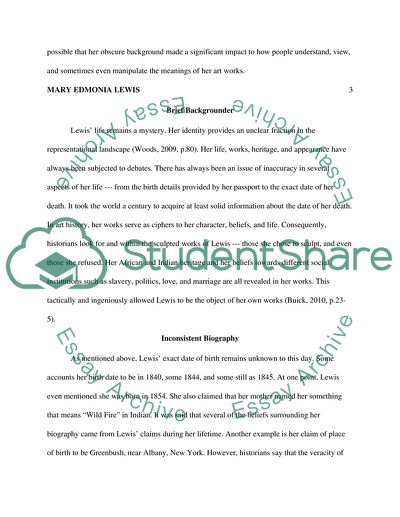Cite this document
(Mary Edmonia Lewis: Art, Gender, and Ethnicity Research Paper - 1, n.d.)
Mary Edmonia Lewis: Art, Gender, and Ethnicity Research Paper - 1. Retrieved from https://studentshare.org/performing-arts/1750235-mary-edmonia-lewis-art-gender-and-ethnicity
Mary Edmonia Lewis: Art, Gender, and Ethnicity Research Paper - 1. Retrieved from https://studentshare.org/performing-arts/1750235-mary-edmonia-lewis-art-gender-and-ethnicity
(Mary Edmonia Lewis: Art, Gender, and Ethnicity Research Paper - 1)
Mary Edmonia Lewis: Art, Gender, and Ethnicity Research Paper - 1. https://studentshare.org/performing-arts/1750235-mary-edmonia-lewis-art-gender-and-ethnicity.
Mary Edmonia Lewis: Art, Gender, and Ethnicity Research Paper - 1. https://studentshare.org/performing-arts/1750235-mary-edmonia-lewis-art-gender-and-ethnicity.
“Mary Edmonia Lewis: Art, Gender, and Ethnicity Research Paper - 1”, n.d. https://studentshare.org/performing-arts/1750235-mary-edmonia-lewis-art-gender-and-ethnicity.


